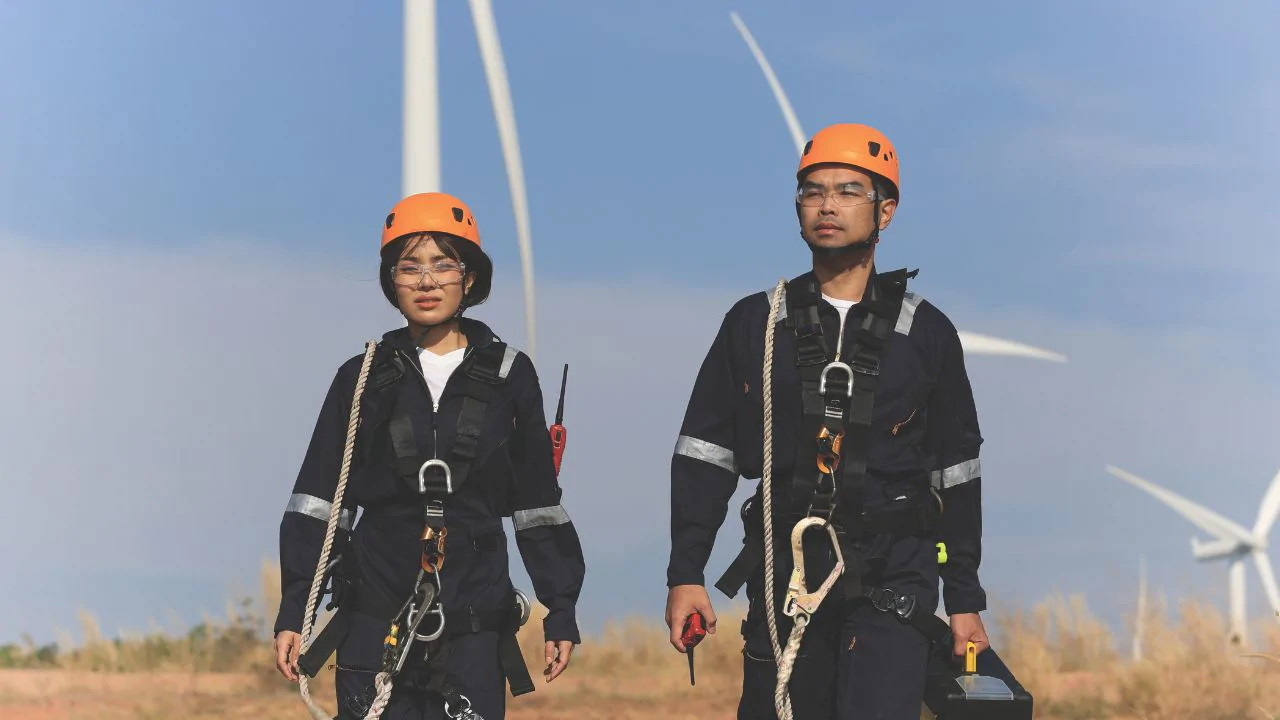The Role of Global Mobility in Powering Renewable Energy Projects Across Asia-Pacific
26 Jun, 20256:37The Asia-Pacific region is prominent in the global renewable energy transition, driven by am...

The Asia-Pacific region is prominent in the global renewable energy transition, driven by ambitious commitments to decarbonise the sector at a time of rapid industrialisation and escalating energy demands. Governments and businesses are accelerating investments in wind, solar and hydro, as well as emerging technologies like green hydrogen and energy storage. However, this growth is constrained by a critical challenge: a widening skills gap in the renewable energy labour market.
As projects multiply, competition for specialised talent intensifies. So, companies are increasingly turning to global mobility as a strategic solution – leveraging international recruitment to bridge shortages in renewable energy expertise.
This blog explores the dynamics of the renewable energy sector in Asia-Pacific, the pressing need for skilled professionals and how businesses can use global mobility services to secure the right talent.
The Renewable Energy Boom and Talent Shortage in Asia-Pacific
Like many other regions, net-zero targets in Asia-Pacific are driving investments in renewable energy and prompting businesses to develop innovative new technologies and projects.
For example, in 2014, APEC set a target for the region to double the share of renewable energy by 2030 compared to 2010 levels. And it looks like this goal will be met: between 2010 and 2022, the renewable energy share in power generation grew by around 63%.
As a result, Asia-Pacific is home to some of the world’s most ambitious renewable energy initiatives, with much of the focus around hydro. In 2022, the largest source of non-combustible renewable electricity in Asia-Pacific was hydro at 54%, followed by wind (24%) and solar (20%).
Despite this growth, a persistent skills gap threatens progress. For example, in 2024, it was reported that the renewable energy sector in India faced a skills gap of around 1.2 million workers.
The transition from fossil fuels to renewables demands niche expertise in technologies such as:
- Advanced grid integration
- Cell manufacturing
- Battery storage
- Green hydrogen production
Local education systems and training programmes have yet to produce enough qualified professionals to meet demand. Furthermore, the rapid evolution of renewable technologies means that even experienced workers require upskilling. This mismatch between supply and demand has led to competition for talent, driving up labour costs and delaying projects.

Examples of Major Renewable Energy Projects in Asia-Pacific
China, India, Australia, Japan and South Korea dominate the sector, although Southeast Asian nations like Vietnam, Thailand and the Philippines are also rapidly expanding their hydro, solar and wind portfolios. The Asia-Pacific region is home to numerous innovative renewable energy projects, including:
Hydro-floating solar hybrid project in Thailand
The government plans to build 16 solar farms with a combined capacity of more than 2.7GW in nine of its hydroelectric dam reservoirs. This will more than triple the global floating solar capacity of around 1.3GW.
The first two projects were Sirindhorn Dam with 45MW of capacity (the world’s largest floating hydro-solar farm when it started operating in 2021) and Ubol Ratana Dam with 24MW.
These solar farms will significantly boost the country’s clean energy capacity of around 12GW. They will also contribute to Thailand’s aim for carbon neutrality by 2050, while also creating thousands of renewable energy jobs.
MacIntyre Wind Precinct, Australia
This 923MW project in Queensland comprises 162 wind turbines and has generated over $680m in local economic benefit. When fully operational (expected to be Q4, 2025), it will be one of the largest onshore wind farms in the world.
During construction, the project has created jobs for around 4500 workers.
Sarulla geothermal power generation project, Indonesia
Indonesia’s location near the ‘Ring of Fire’ means it has much potential for geothermal energy. The 330MW Sarulla project – one of the world’s largest geothermal power plants – is part of the government’s plan to supply 35GW of electricity from geothermal energy.
The project was completed in 2018 and created around 1,800 jobs.

Why Global Mobility is a Strategic Imperative
With talent pools in Asia-Pacific proving insufficient, businesses are looking beyond borders. Global mobility – the movement of skilled workers across regions – has emerged as a vital enabler for renewable energy projects. Companies are sourcing talent from:
- Neighbouring Asian markets, where professionals have transferable engineering skills.
- Europe and North America, where renewable energy sectors are more mature.
Several factors make global mobility an attractive solution:
- Access to specialised expertise: Certain technical roles, such as offshore wind engineers or battery storage specialists, remain scarce in Asia-Pacific. Recruiting internationally ensures projects are staffed with the right skills.
- Speed to market: Waiting for local talent pipelines to develop is not an option for companies racing to meet net-zero deadlines.
- Knowledge transfer: Expatriates bring best practices from established renewable markets, increasing the capabilities of local teams and providing long-term sustainability.
- Diversity: Global mobility also enhances workforce diversity. By bringing in talent from different cultural and professional backgrounds, companies benefit from a broader range of perspectives, which can drive innovation and improve decision-making. A diverse workforce also supports inclusive practices and helps businesses align with global DE&I goals.
How NES Fircroft Supports Renewable Energy Recruitment Through Global Mobility
Navigating international hiring involves logistical, legal and cultural complexities. At NES Fircroft, we specialise in global mobility services, ensuring seamless recruitment for renewable energy businesses, with bespoke support for Asia and Oceania.
Our services include:
- Immigration across Asia-Pacific: offering expertise in local laws and applying for visas and work permits.
- Assignment support: managing relocation, housing and cultural integration.
- Employer of Record (EOR): enabling companies to hire overseas talent without the need to establish a local entity in the destination country.
For businesses scaling renewable energy projects in Asia-Pacific, a strategic approach to talent acquisition is non-negotiable. By leveraging global mobility, companies can overcome skills shortages, drive innovation and maintain a competitive advantage in a rapidly evolving sector.
Contact us today to discover how our global mobility expertise can support your renewable energy recruitment goals.










